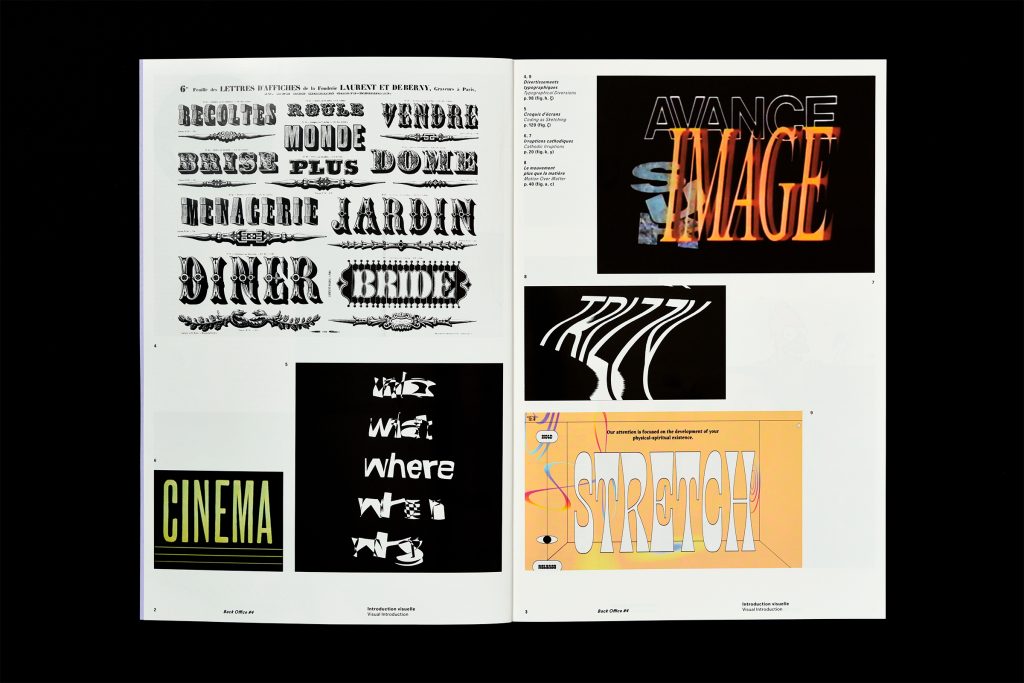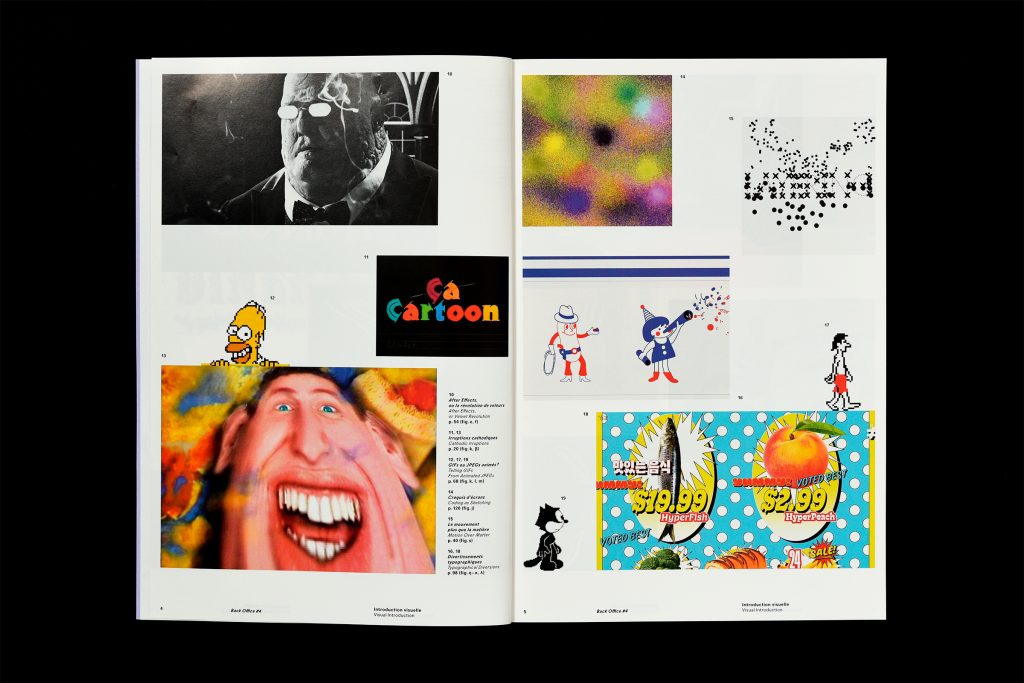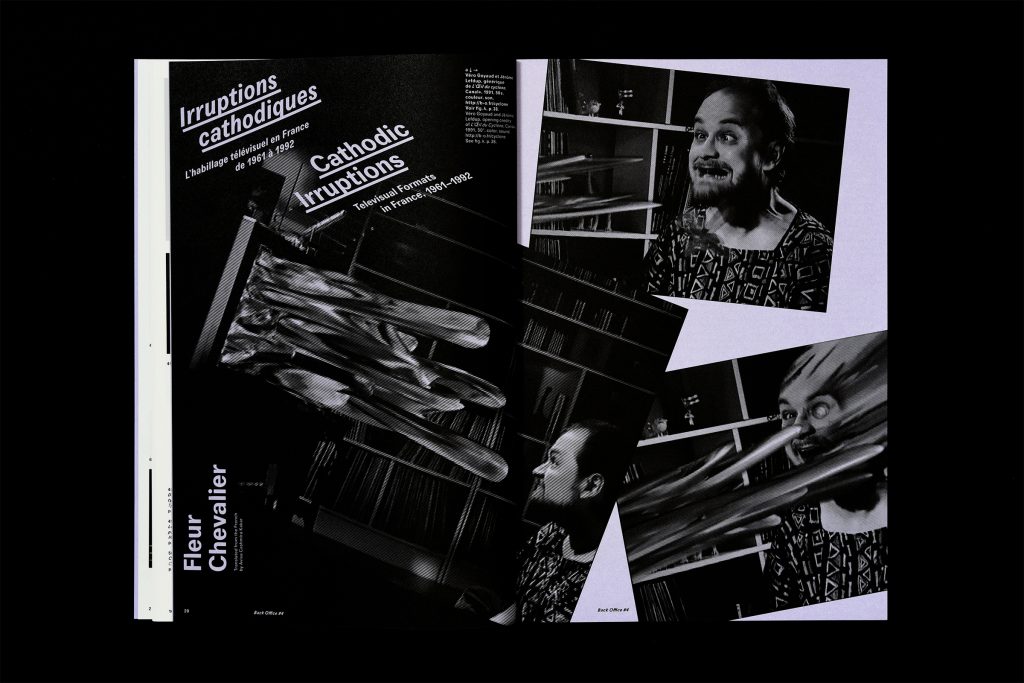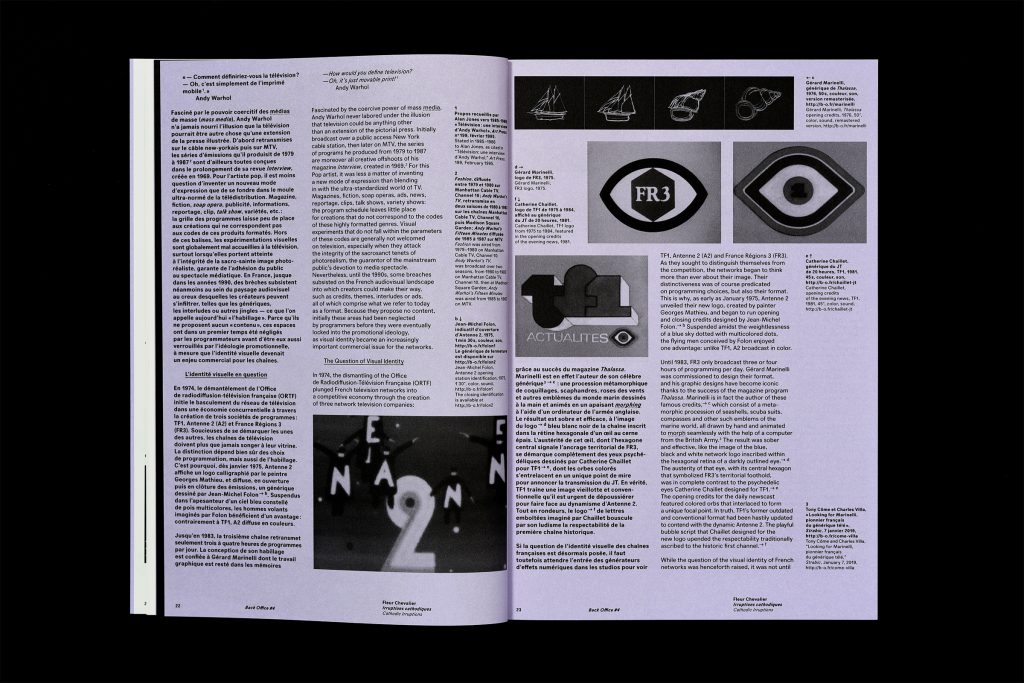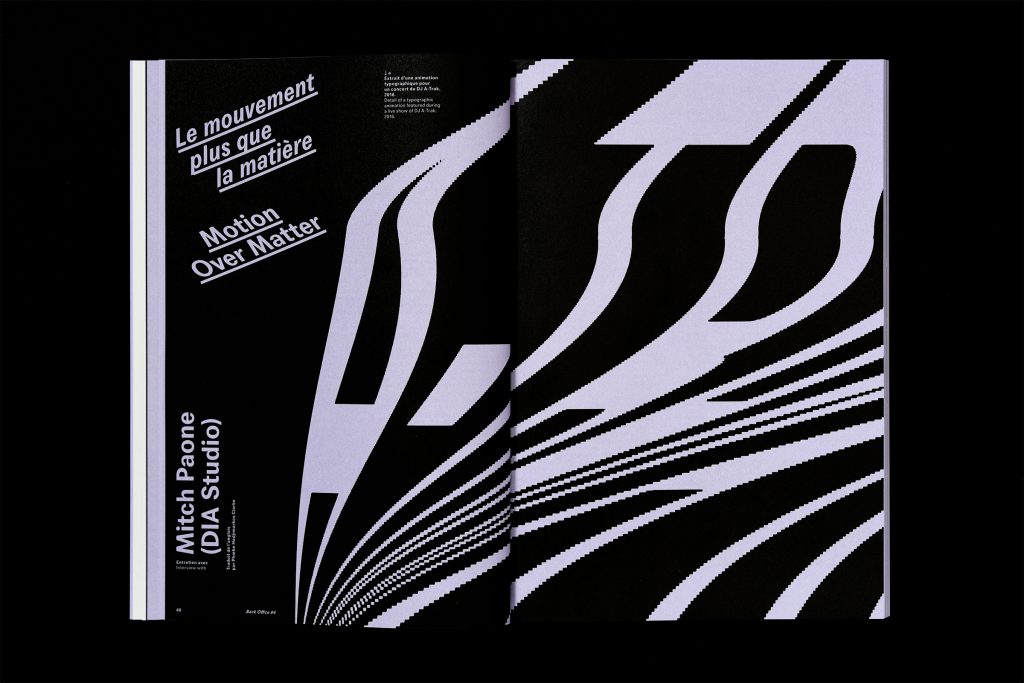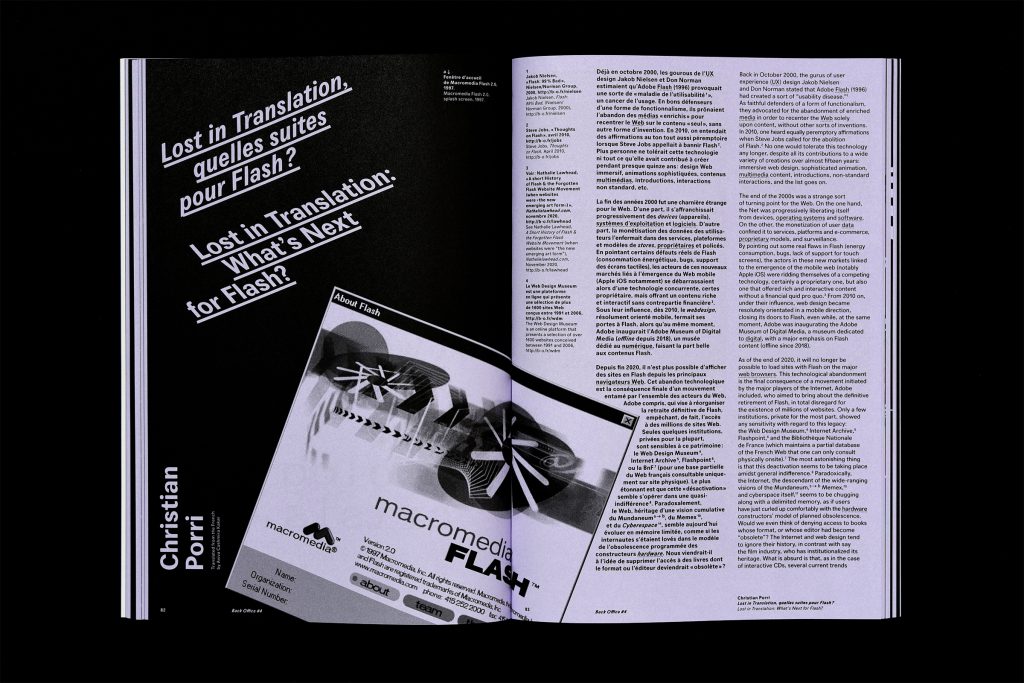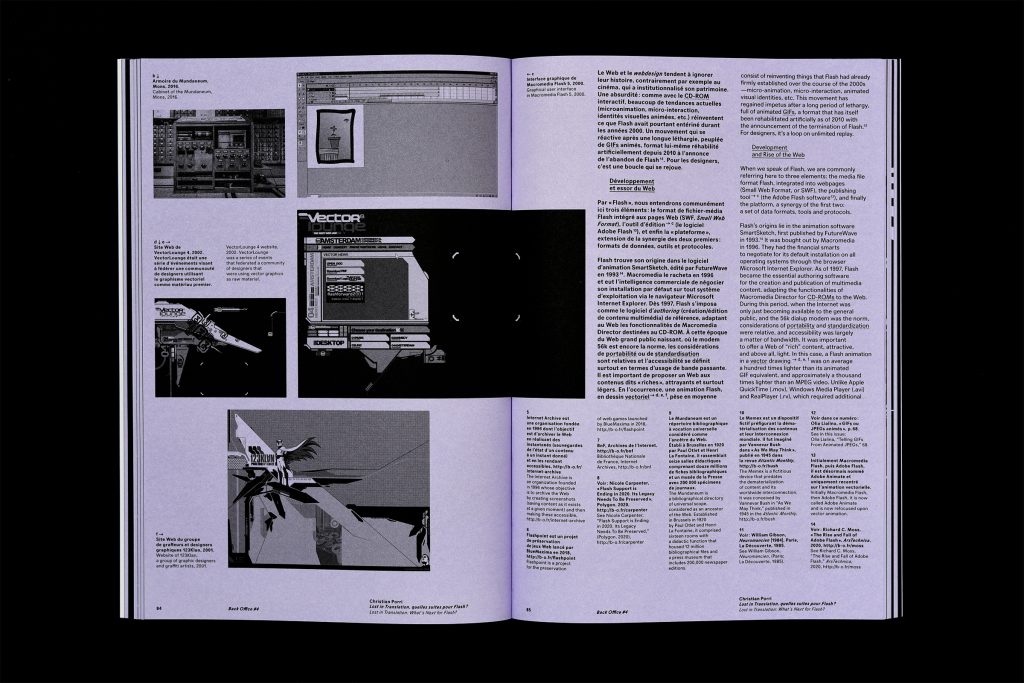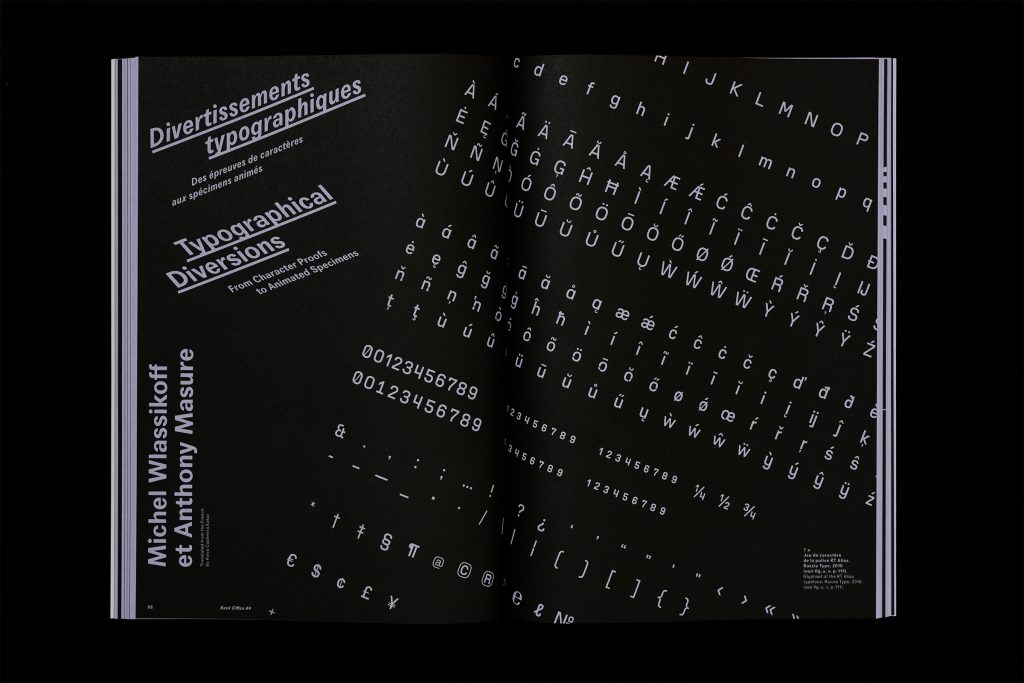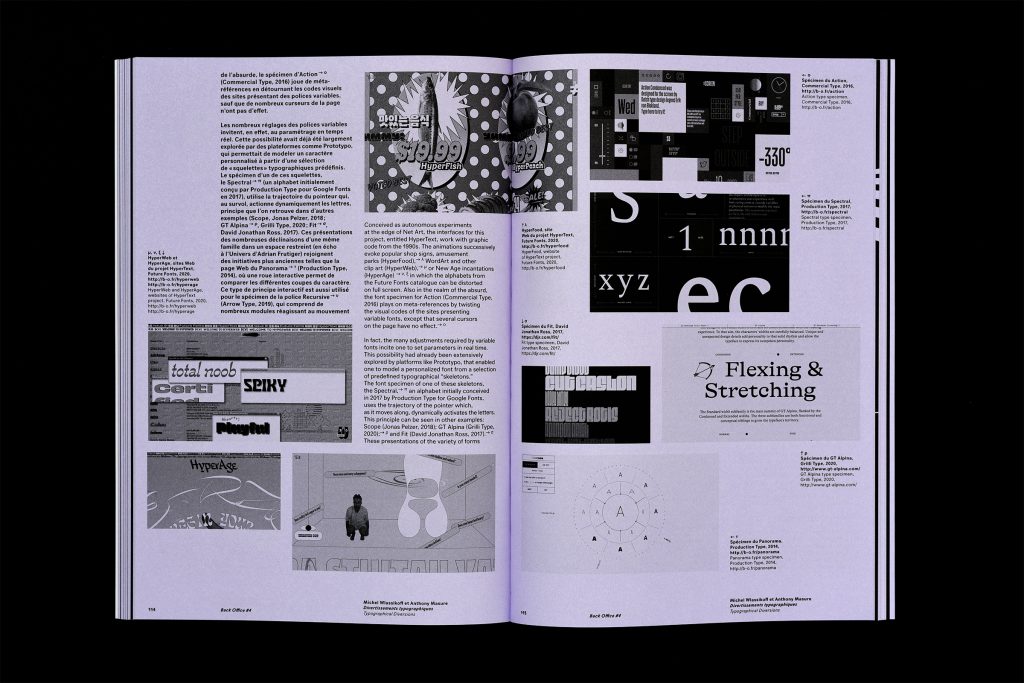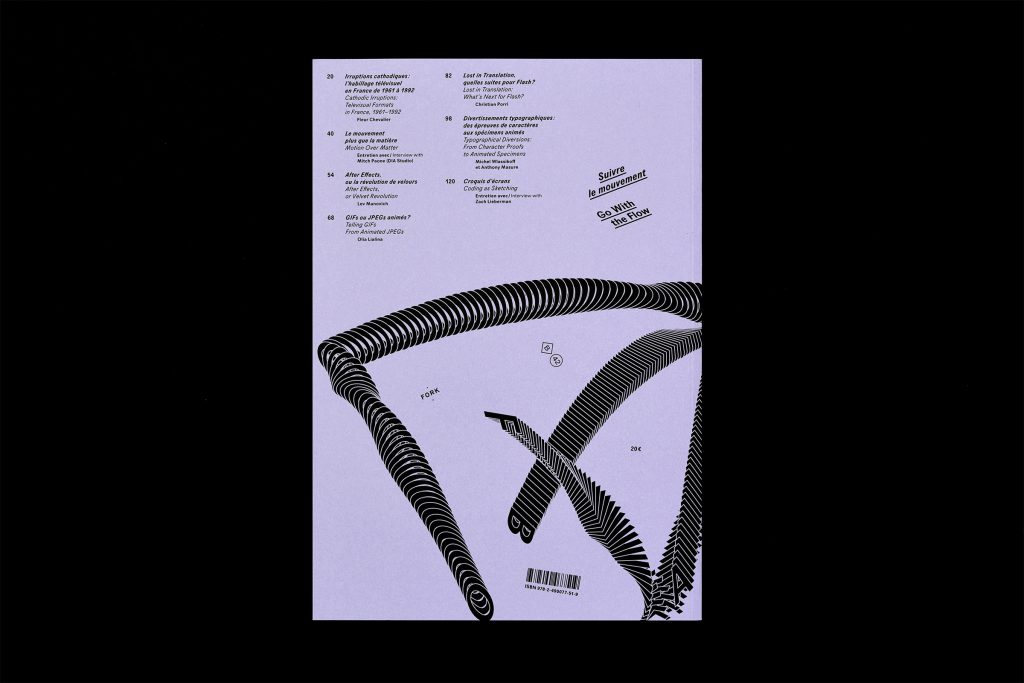BACK OFFICE N°4
DESIGN GRAPHIQUE ET PRATIQUES NUMÉRIQUES
B42-151
parution avril 2021
langue anglais, français
designer E + K – Élise Gay & Kévin Donnot
format 195 x 280mm
pages 144 p.
ISBN 9782490077519
thèmes design graphique, typographie
Sous la direction de Kévin Donnot, Élise Gay et Anthony Masure.
Coédition Fork Éditions.
Publié avec le soutien du Cnap – Centre national des arts plastiques.
Disponible en librairie à partir du 9 avril.
Back Office est une revue annuelle entre design graphique et pratiques numériques. Elle explore les processus de création en jeu dans la diversité des médias et des pratiques numériques contemporaines. En traitant de thématiques telles que le rapport entre code et forme, les enjeux des outils de création ou la perméabilité des médias, elle constitue un espace de réflexion unique et un vecteur de visibilité à l’international pour la communauté francophone.
Ce quatrième numéro revient sur le concept de mouvement appliqué au domaine du numérique. Depuis l’apparition du GIF animé, en passant par l’évolution des génériques de télévision et les mutations des logiciels d’animation, ce numéro propose une analyse du processus de constitution de l’image animée et interroge sa place dans le monde numérique. En quoi le mouvement constitue-t-il désormais un nouveau langage ? Comment les typographes tentent-ils de s’adapter à ce nouveau paradigme ? Et comment comprendre ce nouvel équilibre entre image fixe et image animée ? À travers sept articles et entretiens, ce numéro tente d’apporter des réponses à ces questions et continue son exploration des liens entre pratiques numériques et design graphique.
Fleur Chevalier
Entretien avec Mitch Paone
Lev Manovich
Olia Lialina
Christian Porri
Michel Wlassikoff et Anthony Masure
Entretien avec Zach Lieberman

